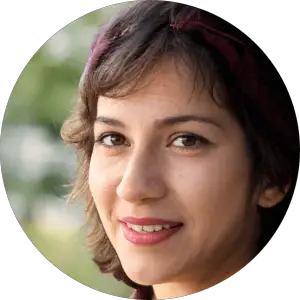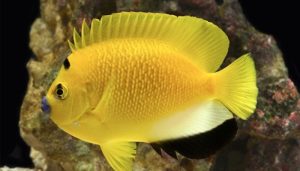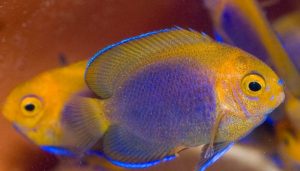Why Is My Betta Fish Pineconing? If you’ve noticed your Betta fish looking swollen with scales sticking out like a pinecone, you might be dealing with a serious condition known as dropsy. This alarming symptom, often referred to as Pineconing Betta Fish, signals an underlying health issue that could threaten your pet’s life.
While it can be heartbreaking to see your vibrant Betta in distress, there’s hope if you act swiftly.
Pineconing is not a disease but rather a sign of advanced infection, organ failure, or severe fluid retention caused by various factors, including poor water quality or bacterial infections.
In this guide, we’ll walk you through the symptoms, causes, and most importantly, the pineconing betta treatments that could save your fish. From practical home remedies to professional treatments, you’ll find everything you need to know to give your Betta the best chance at recovery.
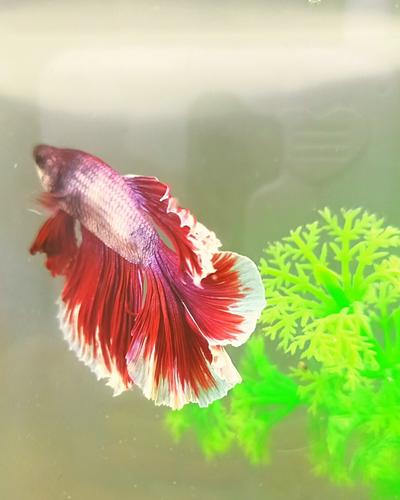
Whether you’re a seasoned aquarist or a beginner, understanding the signs early and knowing how to respond can make all the difference. Read on to discover how to address this troubling condition and restore your Betta’s health and vitality!
A healthy betta fish is a happy betta fish, and you want to treat potential diseases as soon as possible. Keep reading if you’re interested in protecting your finned friends!
Table of Contents
ToggleWhat Is Pineconing in Betta Fish?
What is pineconing in fish? Pineconing is a tell-tale sign of many diseases in fish, causing the body to swell and distend until it takes on an unusual cone shape.
The cause for this symptom lies beneath the surface; when underlying skin expands due to disease, Betta’s scales are pushed outwards from their form resulting in a ‘pinecone.’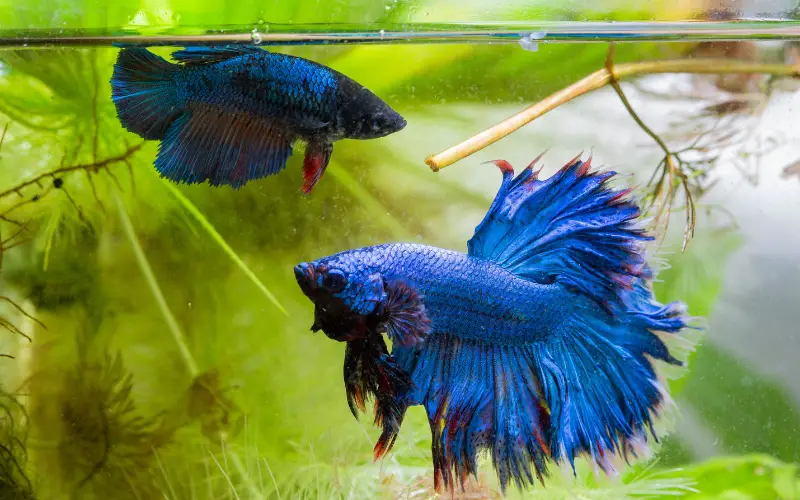
If you spot pine coning in your aquarium’s inhabitants, take immediate action and consult with professionals! But, what causes pineconing in bettas?
What Causes Pineconing in Fish?
What causes a betta fish to pinecone, and why do bettas pinecone? Betta pineconing but not bloated belly is usually the result of one of two betta pinecone diseases:
• Dropsy pineconing – This is a bacterial infection that is aggressive and often fatal; this betta fish disease can be spread through contact with other infected fish, water contaminants, or poor living conditions.
• Swim Bladder Disease (SBD) – This condition occurs when the swim bladder becomes inflamed, preventing the fish from controlling its buoyancy. Poor nutrition, handling, and water conditions can contribute to SBD.
The best way to determine which disease is causing your Betta’s pineconing is by running tests on a sample of the fish’s blood and water.
Can a Betta Fish Live After Pineconing?
Pineconing in betta fish is often a symptom of dropsy, a severe condition caused by organ failure, bacterial infection, or internal fluid buildup. Unfortunately, once a betta exhibits pineconing—a noticeable swelling with raised scales—it is usually a late-stage sign of a serious health issue. While recovery is challenging, it’s not impossible if treatment begins promptly and the underlying cause is addressed.
Steps to Help a Betta Fish with Pineconing:
- Isolate the Fish: Move your betta to a quarantine tank with clean, warm water (78–80°F) to minimize stress.
- Use Aquarium Salt or Epsom Salt: Add Epsom salt (1 teaspoon per gallon) to the water. This acts as a mild laxative, reducing fluid retention and swelling.
- Administer Medications: Use broad-spectrum antibiotics like kanamycin or metronidazole to combat bacterial infections. Anti-parasitic medication may also be needed.
- Maintain Water Quality: Ensure pristine water conditions to prevent further infections.
- Feed a Nutritious Diet: Offer easily digestible, high-quality foods (e.g., daphnia or frozen brine shrimp) in small quantities.
Chances of Survival:
- If Caught Early: Pineconing caused by treatable infections might respond to immediate care, giving the fish a chance to recover.
- If Advanced: When kidney or organ failure is the root cause, survival chances are low despite treatment.
Providing supportive care, such as reducing stress and improving water quality, is crucial to giving your betta the best chance of recovery.
Treating Pineconing Betta Fish: (Pineconing Betta Treatment)
How to treat pineconing in betta? Several methods and pineconing fish treatment options exist for treating pineconing in betta fish. However, the best course of treatment will depend on what is causing the disease.
Betta Fish Dropsy Treatment: (Betta Dropsy Antibiotic)
If your Betta’s pineconing is caused by Dropsy, antibiotics should be administered as soon as possible to help fight the infection. In the meantime, you should also reduce the tank water temperature and feed your pinecone betta fish a more nutritious diet with higher protein content.
Betta Fish SBD Treatment: (Epsom Salt Baths)
Suppose your fish is suffering from swim bladder disease. In that case, giving them regular doses of Epsom aquarium salt baths may be necessary to relieve inflammation and pain associated with the condition.
You should also ensure your Betta gets high-quality food with a balanced diet.
Is Pineconing in Fish Contagious?
Dropsy may be an unfortunate problem, but thankfully it is not contagious.
However, suppose one fish in a tank becomes affected. In that case, the risk of other members of their species also becoming ill increases significantly – leading to what could otherwise become catastrophic losses for those involved with aquaculture.
Therefore vigilance and preventative measures are essential when considering how best to handle this issue to protect all aquatic life within its vicinity.
Pineconing can be an alarming sight, but luckily it is not always fatal. With the proper care and knowledge, you can help your affected fish
beat the odds and get back to their healthy selves in no time.
Remember to take all necessary precautions when treating any disease so that your Betta can recover again.
Top 5 Dropsy Betta Fish Symptoms
Dropsy, also known as ‘Pinecone Disease’ or ‘Bloated Betta,’ is a bacterial infection that can be fatal in pine cone betta fish if left untreated.
The following are the top 5 symptoms of Dropsy in bettas:
- Swelling and bloating of the body – this is often accompanied by a change in body shape, leading to Betas taking on a cone-like shape.
- Clamped fins – Bettas often clamp their fins close to their bodies when they become pineconing fish.
- Loss of appetite – Even if the fish is still eating, it may be doing so less often or as usual.
- Reduction in activity – Sick bettas usually move around less and become more lethargic than usual.
- Sick betta fish pinecone scales Raised – Dropsy can cause pineconing scales on the body, giving them an appearance similar to pine cone scales betta when viewed from the side or above.
These signs of betta scales pineconing should alert you that something is wrong with your pinecone scales betta fish and prompt you to take action immediately!
Keep an eye out for any changes in behavior or appearance, and seek medical advice immediately if your Betta has Dropsy.
What Causes Dropsy in Betta Fish?
Why is my betta pineconing? Dropsy pineconing is an ailment caused by a fluid buildup within the body, leading to pressure against internal organs. It can often be linked to kidney failure due to poor diet, osmoregulation, and other serious infections, such as liver issues.
Other possible causes include poor water quality, high stress, high ammonia levels, poor nutrition, and even genetic predisposition.
By understanding the potential causes of Dropsy in Betta fish, you can take steps to prevent it from happening in the first place.
Keeping up with regular tank maintenance, providing your pine cone Betta with a balanced diet full of nutrients and vitamins, and reducing stress by keeping them away from other aggressive fish species or overcrowding are all good ways to start preventing this condition.
Once your Betta is diagnosed with Dropsy, you must begin treatment as soon as possible. With the right care and precautions, your Betta may be able to make a full recovery!
Is Dropsy in Betta Fish Contagious?
Is Dropsy contagious Betta? Fortunately, the answer is no. Dropsy is not contagious among fish species and should not be considered infectious.
However, if one of your bettas becomes infected, it is important to take precautions as the risk of other fish in the tank becoming ill increases significantly.
If one fish in your tank has Dropsy, you should quarantine them in a hospital tank and monitor their condition closely.
This will help prevent the spread of any additional bacterial infections or betta fish illnesses that could further stress your fish and potentially lead to death.
Can a Fish Heal from Dropsy?
Dropsy can be a severe condition, and it is essential to be aware of the signs so you can take steps to treat it in betta fish.
The good news is that a fish can heal from Dropsy. With the right care and pineconing fish treatment, your Betta can fully recover and return to their healthy self!
The first step is to identify the underlying cause of Dropsy. Dropsy may be challenging to treat; however, there are actions owners can take to support their fish during this time.
The most effective approach is treating the underlying problem and administering Mardel’s Maracyn – an antibiotic specifically designed for gram-negative bacteria that occur from Dropsy.
Is Dropsy Painful for Bettas?
Is dropsy painful for fish? Does Dropsy hurt the fish? While it is not known if Dropsy causes pain in fish, research suggests that fish may experience discomfort due to the increased pressure on the organs.
When a betta is sick with Dropsy, they’re likely to experience intense discomfort due to the buildup of fluids in its body which impedes movement and makes it difficult for them to breathe normally. The only answer: is yes – your BETTA has pain when suffering from this ailment.
It is essential to ensure your Betta does not experience further pain or discomfort during treatment and recovery.
Can You Fix Dropsy in Fish?
Can a Fish with Dropsy Survive? Dropsy is a severe condition that can be difficult to treat and often requires intensive care. The best way to fix Dropsy in fish is to identify and address the underlying cause.
It is crucial to provide your Betta with a balanced diet full of nutrients and vitamins, keep up with regular tank maintenance, and reduce stress in the fish tank.
Once Dropsy has been identified, you may need to administer Mardel Maracyn antibiotic specifically designed for gram-negative bacteria.
This should be done with other treatments to ensure the best chances of recovery.
How to Cure Dropsy in Betta Fish?
One of the biggest killers of Betta Fish is Dropsy. This guide will show you how to cure your fish using a step-by-step scientific approach.
Most people give up on their sick betta pinecone scales, but with this video guide, you can cure them quickly and easily.
Following the instructions in this tutorial, you can successfully treat your Betta Fish for Dropsy and have them swimming around healthy in no time.
What to do if Betta with Dropsy not eating?
The best way to cure Dropsy in Betta fish is to identify the underlying cause and address it as soon as possible.
This may include offering a nutritious diet, regular tank maintenance, and reducing stress in the tank.
If your Betta is not eating, you may need to administer Mardel Maracyn, an antibiotic designed explicitly for gram-negative bacteria.
This should be done with other treatments to ensure the best chances of recovery.
It is also essential to monitor your Betta’s condition closely and promptly treat any other illnesses or bacterial infections.
These can further stress your Betta and potentially lead to a worse prognosis.
It is also essential to provide your Betta with plenty of clean, warm water and a high-quality pellet or flake fish food to ensure they get the nutrition they need.
With patience and care, your Betta may recover fully from Dropsy and return to regular swimming and eating habits.
However, it is essential to note that the prognosis can vary from Betta to Betta.
How Long Can a Fish Live with Dropsy?
Early-stage dropsy betta fish can live for a few weeks or even months with proper care. However, the time a betta can live with Dropsy depends on the severity of the condition and how quickly it is addressed.
Fish with Dropsy often experience a prolonged battle for survival – their bloating might recede temporarily, only to return more severe than before. Ultimately, these bacterial infections usually prove fatal within several months.
How Long Does It Take for a Betta to Die from Dropsy?
It is difficult to determine precisely how long a Betta with Dropsy will take to die, as each case varies. Factors such as the severity of the disease and Betta’s overall health will determine how long it takes for them to die.
Sometimes, a Betta may die within a few days or weeks if their condition is severe. In other cases, a Betta may survive for several months or even years with proper treatment and care.
No matter what stage of Dropsy your Betta is in, it is vital to take action as soon as possible to ensure your fish’s best chance of survival.
Commonly Asked Questions about Betta Fish Pineconing (FAQs)
How do you fix a betta fish that has Pineconing?
Pineconing, raised scales, is often dropsy, a sign of organ failure. Move your betta to a hospital tank with warm (84°F) water and Epsom salt. Treat with broad-spectrum medication. Seek professional help for specific diagnoses and dosages.
Can a fish come back from Pineconing?
Pineconing (dropsy) in fish is severe. Early intervention with medication might help, but chances of recovery are low.
Can a fish recover from dropsy?
Yes, fish with dropsy can recover if caught early. Early signs include pinecone scales and swollen belly. Treatment focuses on the underlying cause, like bacteria or parasites, and improving water quality.
Can you save a fish that’s Pineconing?
Saving a pineconing fish is difficult, but possible. It’s a sign of advanced illness, often bacterial. Immediate action is key. Isolate the fish, improve water quality, and try Epsom salt baths or broad-spectrum antibiotics.
Does Pineconing mean dropsy?
Pineconing (scales sticking out) is a symptom of dropsy, not dropsy itself. Dropsy is the underlying fluid buildup causing the pineconing. Both indicate a serious fish illness.
How long do fish with dropsy live?
Fish with dropsy have a poor prognosis. Often, they die within several months. Early intervention and treatment can sometimes extend their lifespan.
Conclusion
So, what is pineconing in betta fish, and how to treat betta fish pineconing? If your betta fish is affected by pine coning, don’t despair—there are pineconing fish treatments available. By understanding the underlying causes of this betta fish pineconing disease and taking steps to correct them, you can give your fish the best possible chance for a complete recovery. And with proper care and regular monitoring, your pineconing betta fish will swim and look like healthy fish in no time. In this post, we’ll dive in-depth into what causes pineconing in betta fish and how to treat pineconing fish and prevent it from happening again down the line.
You might also like
- How Long Can a Betta Fish Live Out of Water? (Shocking Fact)
- Can Betta Fish Live in a Bowl Without a Filter? (Solved)
- Do Betta Fish Fight to Death? – TOP 5 Reasons (Solved)
- Betta Fish Dropsy: Symptoms & Causes (5 Proven Curing Tips)
- How Long Do Betta Live? (10 Tips for A Healthy Betta)
- 5 Reasons Why Do Betta Fish Play Dead (Uncovered & Solved)
- How to Tell If Betta Is Dying of Old Age? (7 Clear Signs)
- White Spots on a Betta Fish: 7 Effective Ways to Treat Ich!
- Betta Fish Diseases Fin Rot: 3 Quick Fin Rot on a Betta Treatments!
- Columnaris in Bettas: Symptoms, Treatment, and Prevention!
- Bloating Betta Fish: Symptoms, Causes & Quick Fix!
- Betta Fish Diseases Exposed: 7 Deadly Threats You Must Know!

